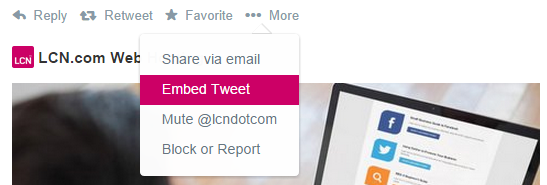One of the most effective ways of getting more followers or potential customers is from recommendations by existing customers.
What others say about your business carries more weight than what you say about yourself.
Recommendations used to be shared in person, but nowadays people also share recommendations on their favourite social media site.
Switched to @lcndotcom earlier; best decision I’ve ever made online. They’re brilliant.
— Ross Andrew Powell (@YouGotPowelled) July 7, 2014
So, how can you take these recommendations and use them as social proof
What is social proof?
If a friend or respected colleague tells you a story, you will be inclined to believe them, because you have already established a level of trust in what they say.
Now think about the last book you read or the last phone you bought. Did you buy these items based on the opinion of someone you know?
The majority of people’s purchasing decisions are based on information received from their social circle.
Nothing is more effective than word-of-mouth advertising. Moreover, the best type of word-of-mouth advertising is a recommendation from a happy customer.
Planting Trust
Not every social media site lends itself well to sharing recommendations, but Twitter seems to be the ideal conduit for spreading testimonials.
Many Twitter users post positive messages about services or products that they are especially happy with. When a Twitter user tweets you about something you did right, you now have the chance to turn that message into a means of connecting with more potential customers.
 Tweet used as social proof – LCN.com homepage
Tweet used as social proof – LCN.com homepage
One thing you should be mindful of though is that Twitter moves incredibly fast. One Tweet is easy to miss. If you don’t act quickly, most people will never get to see the recommendation.
So, what do you do? A good solution to this problem is to embed the Tweet into your main website.
Every tweet has a unique URL, which makes it possible to embed the Tweet into your website or blog, exposing it to a wider audience. Now the Tweet can fulfil its full potential as social proof.
There are several places where you can embed Tweets into your website. You don’t have to restrict yourself to a separate testimonials page. A recommendation placed on a sales page or next to a download or call-to-action button is very effective.
Related: Reviews and local SEO
How to embed a tweet on a web page?
Just hover over the Tweet in question, and click “More”. Select “Embed Tweet”, and copy and paste the given code into the code of the web page where you want to Tweet to appear.
 Step 1
Step 1
 Step 2
Step 2
Keep in mind that if the Twitter user later decides to delete the Tweet, it will disappear from your site as well.
Engaging Consumers
Embedded Tweets on your website are interactive, just like Tweets on Twitter itself. In this way, people can interact with the Tweets on your website, just like they would on Twitter.
They can react to the Tweets, re-tweet them, or start following the tweeter or tweetee, all this without leaving your website. This is how you draw more people into the conversation. Another way you can use embedded Tweets is in a blog.
Say you wrote a blog post in which you refer to research or findings by someone else. You can now link to these external sources by embedding Tweets containing the URLs of the sources.
The embedded Tweets from highly-rated, trustworthy sources will back up your story nicely.
Related: Encouraging positive reviews
Embedding tweets containing media
Instead of embedding a YouTube or SlideShare presentation directly into your website, consider sharing the content on Twitter first, and then you embed the Tweet into the web page (like below).
. @googleanalytics shows you how frustrating a badly optimised landing page would be in real life! http://t.co/xRc568lL
— LCN.com Web Hosting (@lcndotcom) December 17, 2012
This way, your website visitors can view the video and presentation on your website, while at the same time being able to comment or engage with it via Twitter.
Likewise, if you want to organise an event or webinar, tweet about it first, then add the Tweet to your website.
Related: Small business guide to Twitter
Conclusion
Tweets have a short lifespan, and they soon become invisible as they sink further down the timeline.
When a happy customer sends a complimentary Tweet to you directly, chances are not many followers will get to see it.
By embedding the Tweets into your website or blog, however, you can enjoy the power of social proof for much longer. In this way, recommendations from happy customers will know a much longer life, and you can capitalise on the credible and authentic feeling of trust this generates.
Your Say!
Do you look for social proof when buying online? Do tweets from real people feel more authentic than traditional site testimonials? We’d love to hear your thoughts in the comments below.

3 thoughts on “Using Twitter as Social Proof”
Comments are closed.